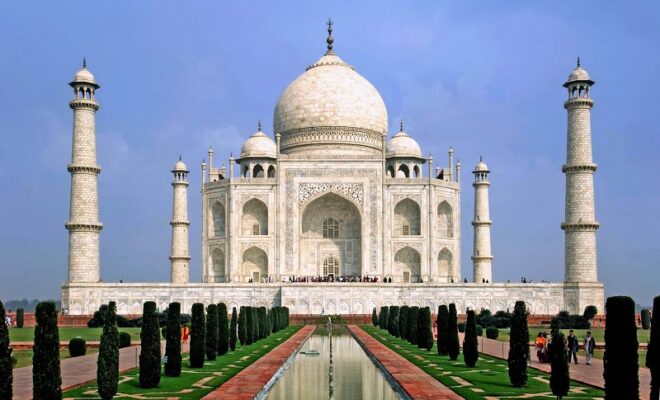RTI Filed To Push ASI As Allahabad High Court Dismisses Taj Mahal Investigation Plea

Last updated on May 13th, 2022 at 04:06 am
A brewing controversy over whether Taj Mahal was actually a temple for Shiv has been put to rest by the Allahabad High Court, that has refused to let the 22 doors of the tomb to be accessed.
The court has rejected a petition seeking any kind of investigation into the history of the tomb. It said, ‘let the doors of the 22 rooms be left for the historians to discover.’ The plea was apparently, filed by Rajneesh Singh, a BJP youth media in-charge, before the Lucknow Bench of Allahabad High Court that sought the directions to the Archaeological Survey of India to probe the 22 closed doors in the Taj Mahal to ascertain the presence of the idols of Hindu deities.
Also Read: Salman Khan Makes Appeal To Bombay High Court On Journalist’s Phone Snatching Case
The hilarious assertion was that the tomb was actually a shiv mandir. The Taj Mahal is said to be shrouded in quite a mystery about all the craftsmen that were used to build this tomb. Apparently, all had lost their hands in order no such tomb could ever be replicated.
A black marble Taj Mahal is also said to exist which was meant for the other queen of Mughal emperor Shah Jahan. Meanwhile, Trinamool Congress spokesperson Saket Gokhale has now sought information from the Archaeological Survey of India (ASI) about the monument’s history. This comes after the Allahabad High Court has already dismissed BJP leader Rajneesh Singh’s petition to set up a fact-finding committee to probe the history of the Taj Mahal and open the doors of its 22 locked rooms.
Also Read: Hijab row: Karnataka High Court adjourns hearing till next date
The claims are of the origins of the insides of the temple being called ‘Tejo Mahal’. This is the first time that ASI has been asked to furnish such data. a book written by self-styled historian PN Oak which presents so-called evidence about the Taj Mahal’s Hindu origins. Proponents of ‘Tejo mahalay’ theory believe that a Shiva temple stood at the exact spot where the Taj Mahal now stands, and the temple’s building was allegedly appropriated by Shah Jahan to bury his wife Mumtaz in the ‘Sanctum Sanctorum’ of the temple. But in 2017, the ASI told the Agra court there was no evidence to suggest the monument ever housed a temple.


